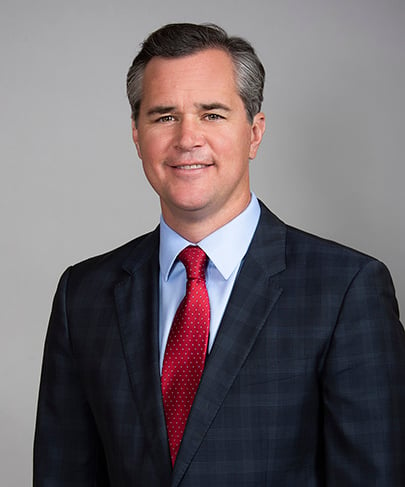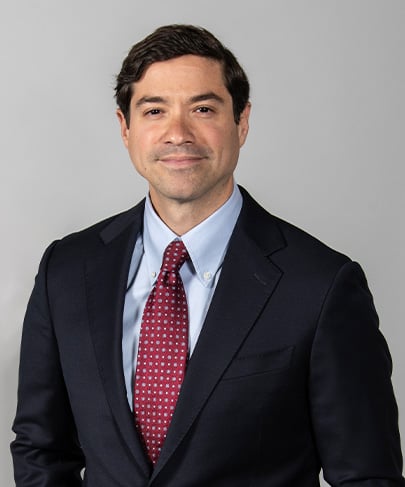Ohio Legislature Passes Biennial Budget; Governor DeWine Approves Historic Investments in Public Education and School Choice
DOWNLOAD PDF- Shimp, Kevin D. Vorys, William V. O'Donnell, Terrence
- Industry Alerts
Click “Subscribe Now” to get attorney insights on the latest developments in a range of services and industries.
On June 30, 2023, the 135th Ohio General Assembly passed the state’s biennial Operating Budget for FY 24-25 (House Bill 33), and the legislation was signed by Governor DeWine on July 4, 2023. As is customary, the budget bill contains numerous wide-ranging tax, spending, and policy provisions that apply to and fund state government over the next two fiscal years. You can see HB 33 in its entirety, along with detailed funding projections, analyses, and other guidance materials on the Legislative Service Commission’s website here.
HB 33 includes a significant expansion of the state’s existing school choice (“voucher”) programs, as well as broad policy reforms and investments to expand educational options for secondary students. It also increases funding for public schools and contains numerous targeted investments to enhance career-technical education and workforce development. We detail the most significant of these funding and policy provisions below:
Funding for K-12 Education
HB 33 increases state spending on public k-12 education to $8.06 billion in fiscal year 2024 and nearly $8.3 billion in fiscal year 2025. This represents a continued “phase-in” of the previous budget’s “Fair School Funding Plan.”[1] By advancing and updating the state’s school funding formula, HB 33 produces a significant collective increase in funding for Traditional School Districts, Joint Vocational School Districts, Community schools, and STEM schools, totaling approximately $1.18 billion from fiscal year 2023 to fiscal year 2024. Click here for funding projections for traditional school districts, Joint Vocational School Districts, and community schools.[2]
School Choice Expansion / Universal Vouchers
HB 33 makes the “EdChoice Expansion” Scholarship universally available to every Ohio student. The budget bill also includes a plethora of policy reforms to EdChoice, and other state voucher programs (described below) intended to increase eligibility and facilitate broader participation.
EdChoice Scholarships: Established in 2005, the “Traditional” EdChoice Scholarship program enables students residing in low-performing public school districts to secure state funds to attend participating private schools. In 2013, lawmakers expanded the scholarship to include students across the state whose families fell below-specified income thresholds, regardless of their district of residence. These scholarships currently provide k-8 students with $5,500 and high school students with $7,500 each school year, which families can use to cover tuition costs at a private school.
HB 33 enhances these programs by increasing the scholarship amounts and creating universal eligibility for all Ohioans regardless of their income level. Under the bill, the value of the EdChoice Scholarships increase to $6,165 for students in k-8 and $8,407 for high school students. Additionally, the bill redefines income from “family income” to “family’s adjusted gross income”, increases the threshold for the full award amount to 450% of the federal poverty level (approximately $135,000 for a family of four), and makes families above the income threshold eligible for a prorated EdChoice Scholarship—with a floor of $950 for high school students. You can access the full table showing prorated scholarship amounts above 450% of federal poverty level here.
Autism Scholarship: Ohio’s Autism Scholarship is currently available to students on the Autism spectrum who have an Individualized Educational Plan (IEP). The budget updates the program to allow schools to utilize behavior analysts as providers for intervention services, and expands student eligibility to students without an Autism-related IEP—as long as the student has an Autism diagnosis or their school district has identified them with Autism.
Jon Peterson Scholarship: The Jon Peterson Scholarship provides families with special needs students that have an IEP with a scholarship that helps cover the cost of tuition at private schools, along with the services the student’s IEP requires. Under HB 33, the maximum award amount available under the Jon Peterson Scholarship increases from $27,000 to $32,445 in fiscal year 2025.
Cleveland Scholarship: Founded in 1996, the Cleveland Scholarship Program (CSP) is Ohio’s oldest publicly funded scholarship. It mirrors the Traditional EdChoice program except it is only available to students living in and around the Cleveland Metropolitan School District. Under HB 33, the scholarship amount is tied to the new EdChoice thresholds and increases to $8,407 for high school students and $6,165 for K-8 students. The budget also eliminates the CSP's geographical limits that restricted the number of schools that could accept the scholarship. Now under HB 33, students can attend any private school regardless of location using the CSP.
To implement these changes to state-sponsored scholarship programs, the legislature allocated $964.5 million in fiscal year 2024 and $1.05 billion in fiscal year 2025 to fund these programs. HB 33 also simplifies scholarship administration through the following policy reforms:
- Prevents schools from mandating income verification for families receiving traditional EdChoice, Jon Peterson, Autism, or Cleveland scholarships.
- Offers students the option to select either Traditional EdChoice or EdChoice Expansion if the student is eligible for both, and allows students to switch programs during the school year.
- Requires private schools with students receiving vouchers to disclose their tuition rates each year to the Ohio Department of Education and Workforce.
- Allows private schools to accept scholarships from private sources to cover tuition costs for students that exceed the amount of the EdChoice scholarship award.
- Requires DEW to develop a student growth measure for EdChoice scholarship students enrolled in grades 4-8 at chartered nonpublic schools with more than ten scholarship students and to make growth reports publically available.
- Extends the application deadline for EdChoice Scholarship and Cleveland Scholarship from July 1 to October 15.
Strengthening Career-Technical Education
HB 33 includes historic investments in the state’s career technical schools, as well as policy reforms to emphasize and encourage the career-tech pathway:
Department of Education and Workforce (DEW): HB 33 restructures the Ohio Department of Education into the newly created DEW. Under the budget bill, the DEW is comprised of one Division of Career-Technical Education and one Division of Primary and Secondary Education, each led by a Deputy Director who serves on the Governor’s Executive Workforce Board. These deputies report to the DEW Director, who serves in the Governor’s cabinet.[3] HB 33 also transfers policymaking authority from the State Board of Education to the DEW.
Funding for Expansion: The budget bill allocates $300 million towards facility expansion at the state’s career-technical schools. Of this sum, $100 million may be used by all schools—including Community and STEM—for career-tech equipment and supply needs.
Ohio Technical Centers: The budget includes language facilitating the ability of high school students to enroll in the local adult education Ohio Technical Center for their desired career-technical education program. This concept seeks to address circumstances in which a student may not be able to access the same career-tech program at the local high school.[4]
Short-Term Certificates: HB 33 makes significant investments to enhance adult education offerings by establishing the Work Ready and Talent Ready grant programs. These programs offer operational assistance to Ohio Technical Centers and other Institutions of Higher Education, as well as tuition assistance for adult students enrolled in short-term career-technical education programs.
Strengthening Community Schools
Community School Equity Funding: HB 33 increases community school funding for brick-and-mortar schools by allocating to schools an additional $650 per pupil in both 2024 and 2025. These funds help community schools invest in curriculum and other student programs that provide a high-quality education for each student.
Funding for Facility Needs: HB 33 makes a substantial investment in community school facilities by increasing the facility supplemental funding for each school from $500 per pupil to $1,000 per pupil. These facility funds can be used by community schools for a variety of purposes, including expanding their classrooms or purchasing additional buildings.
Quality Community School Support Fund: The budget bill also supports increased funding for high-performing community schools through its $273 million investment in the Quality Community School Support Fund, as well as policy reforms aimed at increasing the pool of eligible schools. Under HB 33, high-performing community schools receive an additional $3,000 for each economically disadvantaged student and $2,250 for all other students. Schools meeting eligibility requirements had previously received $1,750 for economically disadvantaged students and $1,000 for all other students.
Support for Students and Schools
International Baccalaureate: The legislation also helps International Baccalaureate (IB) students by creating greater uniformity in how universities award course credit for IB exams. Before HB 33, each university developed its own policy for selecting which IB exams and what scores qualified a student for college credit. Now, in alignment with the policy for Advanced Placement students, the Ohio Department of Higher Education will establish a single policy for awarding college credit for IB exams that all public universities must adopt.
Nonpublic and Community School Transportation: The budget bill corrects an oversight in current law, which prohibits school districts that provide transportation to chartered nonpublic or community school students from dropping students off too early before the start of the school day, but fails to similarly address the district’s obligation to ensure that students do not arrive late. HB 33 corrects this oversight and prohibits transporting districts or vendors from delivering students late to school.
[1] Adopted during the last budget cycle (HB 110) and implemented in FY 22, the “Fair School Funding Plan” refers to the state’s school funding formula—used to calculate the cost of education and associated state funding for every public school across Ohio. It originally contemplated a 6-year “phase-in” to allow for a seamless transition from the old formula, to be completed over 3 budget cycles. HB 33 continues the proposed phase-in by funding years 3 and 4. It also updates critical teacher salary data associated with the formula, which produces more accurate cost projections (and associated funding increases).
[2] Funding projections based upon data released from House passed version of HB 33 which closely mirrors funding levels adopted by the HB 33 Conference Committee.
[3] Under HB 33, the Governor appoints all three Directors with the advice and consent of the Ohio Senate.
[4] See R.C. 3313.901(B) for eligibility.
Related Practices
Contacts

Recent Insights
- Industry Alerts Ohio Adopts Preemption Legislation, Blocking Local Minimum Wage Hikes and Other Local Employer Restriction Proposals
- Industry Alerts Five Upcoming Changes to Ohio’s Medical Marijuana Laws & Recreational Update
- Industry Alerts Ohio Extends Clean Energy “Payment in Lieu of Tax” Program for Four Additional Years: Legislature Adds Flexibility on In-State Workforce Requirement
- December 16, 2025 In the News Three Dickinson Wright Attorneys Named to 2026 Ohio Super Lawyers, Two Named Rising Stars
- February 04, 2025 Industry Alerts Protecting Students and Schools: Guidance on Federal Agent Presence
- December 17, 2024 In the News Three Dickinson Wright Attorneys Named to 2025 Ohio Super Lawyers, Four Named Rising Stars
- January 2, 2024 In the News Two Dickinson Wright Attorneys Named to 2024 Ohio Super Lawyers, Three Named Rising Stars
- March 27, 2023 Industry Alerts U.S. Supreme Court Decides Perez v. Sturgis Public Schools
- December 29, 2022 In the News Two Dickinson Wright Attorneys Named to 2023 Ohio Super Lawyers, Two Named Rising Stars


